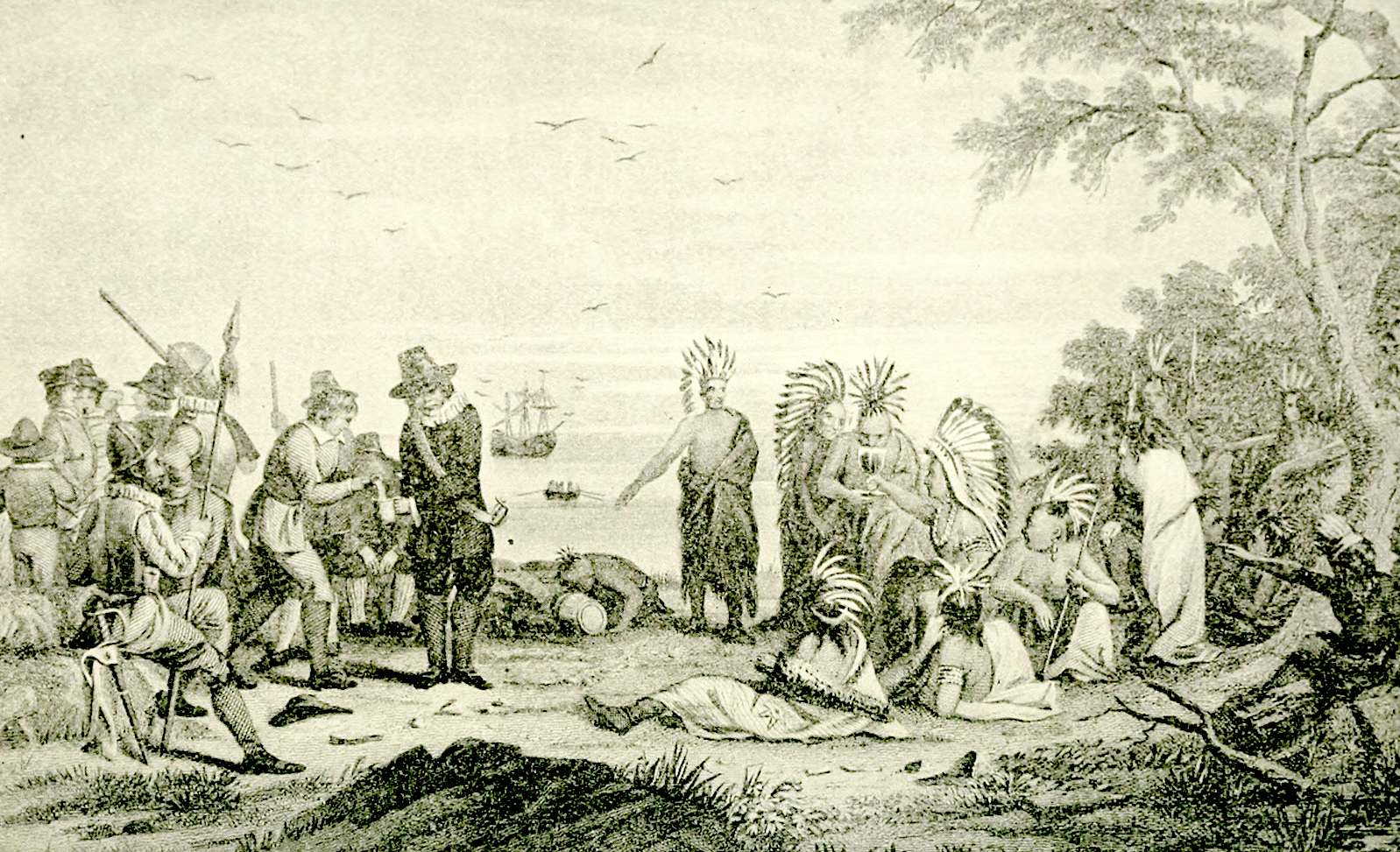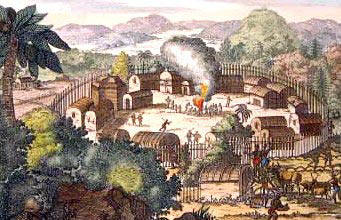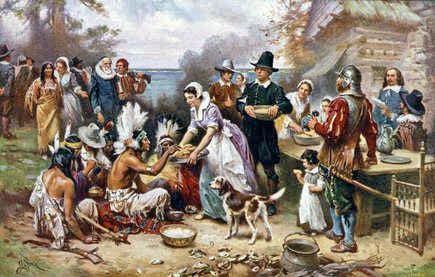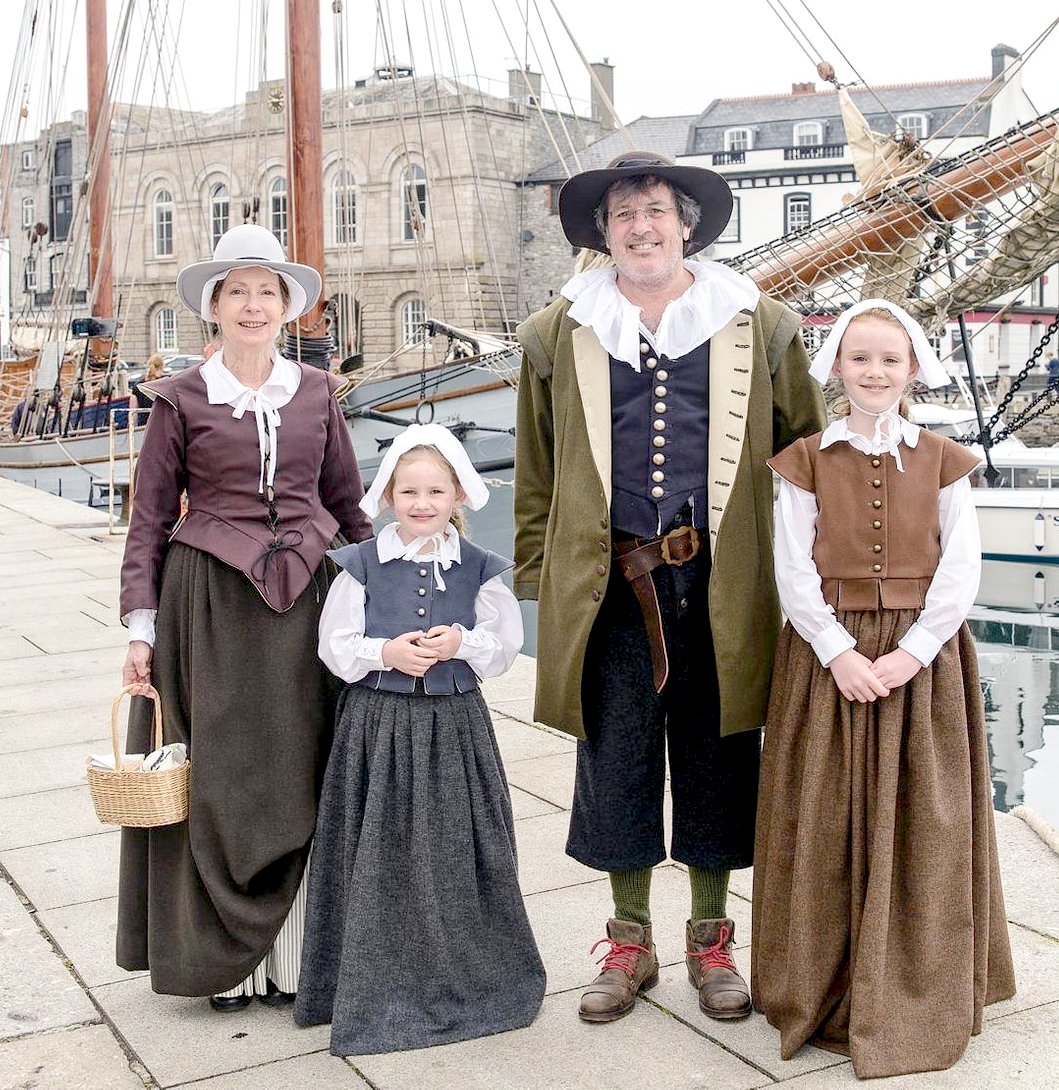|

PEOPLE
OF FIRST LIGHT - The Wampanoag are native Americans and have lived in Rhode Island and Massachusetts for more than 12,000 years - long before the pilgrims arrived.
Their name means People of the First Light.
In 1600s they had around 40,000 people across 67 villages but were struck by disease - which was almost certainly of European
origin, the Covid 19 of their time.
The Great Dying, as it was called, killed tens of thousands of them, weakening the Wampanoag nation politically and economically. One of the villages wiped out was
Patuxet, which was taken over by the pilgrims to become Plymouth Colony.
PREACHING REBELLION & CHIEF METACOM (KING PHILIP)
However, after the death of Massoit, deterioration of relationship (due to the
relentless conversion of the Indians by the English) compelled his son, Metacom, also referred to by the English as King Philip, to wage war against them. In this war, King Philip was defeated by the colonists, most of the
Wampanoag were killed and sold into slavery, while the survivors who fled to the island of Nantucket had to face the onslaught of disease and
epidemics
WAR
Under Philip's leadership, the relationship changed dramatically between the Wampanoag and the colonists. Philip believed (and has been proved right) that the ever-increasing colonists would eventually take over everything
- not only land, but also their culture, their way of life, and their religion. The Wampanoag numbered only 1,000, and Philip began to visit other tribes to build alliances among those who also wanted to push out the colonists. At that time, the number of colonists in southern New England already numbered more than double that of the Indians
- 35,000 vs. 15,000. In 1671, Philip was called to Taunton, Massachusetts where he listened to the accusations of the colonists and signed an agreement that required the Wampanoag to give up their firearms. Philip did not take part in the subsequent dinner. His men never delivered their weapons.
Philip gradually gained the Nipmuck, Pocomtuc, and Narragansett as allies, and the beginning of the uprising was first planned for the spring of 1676. Then in March 1675, John Sassamon was murdered. Sassamon was a Christian Indian raised in Natick, one of the "praying towns." He was educated at Harvard College and had served as a scribe, interpreter, and counselor to Philip and the Wampanoag. But, a week before his death, Sassamon reported to Plymouth governor Josiah Winslow that Philip was planning a war against the colonists.
Sassamon was found dead under the ice of Assawompsett Pond. A week later; three Wampanoag warriors were accused of his murder by a Christian Indian and taken captive by the colonists; they were hanged in June 1675 after a trial by a jury of 12 colonists and six Christian Indians. Many saw this as a rigged decision.


ACCOMMODATION -
Many Wampanoag lived in oval-shaped longhouses during the winter. The main difference between the wetu and the longhouse was that the longhouse was a permanent structure, much larger elongated shape. Mats for these winter homes were woven from bulrushes. A longer process than using cattails, but with a hardy result. The mats were used for both the outside and interior of the Wampanoag longhouse and frequently painted black and red. The longhouse villages were surrounded by fencing (palisades) and reinforced with mud. Longhouses were built up to 200 feet long, 20 feet wide and 20 feet high. The longhouses had smoke holes in the roof to allow air and light in and smoke to escape. The smoke hole had a birchbark cover to keep out the rain. The position of the cover could be moved as the direction of the wind changed.
The execution was a catalyst for war, combined with rumors that the colonists wanted to capture Philip, with the obviousness of another rigged trial. Philip called a council of war on Mount Hope; most Wampanoag wanted to follow him, with the exception of the Nauset on Cape
Cod and the small groups on the offshore islands. Allies included the Nipmuck, Pocomtuc, and some Pennacook and eastern Abenaki from farther north. The Narragansett remained neutral at the beginning of the war.
On June 20, 1675, some Wampanoags attacked colonists in Swansea, Massachusetts and laid siege to the town; they destroyed it completely five days later, leading ultimately to King Philip's War. The united tribes in southern New England attacked 52 of 90 colonial settlements, and partially burned them down.
The war turned against Philip in the spring of 1676, following a winter of hunger and deprivation. The colonial troops set out after him, and Canonchet was taken captive and executed by a firing squad. Canonchet's corpse was quartered, and his
head was sent to Hartford, Connecticut to be put on public display.
During the summer months, Philip escaped from his pursuers and went to a hideout on Mount Hope in Rhode Island. Colonial forces attacked in August, killing and capturing 173 Wampanoags. Philip barely escaped capture, but his wife and their nine-year-old son were captured and put on a ship at Plymouth; they were then sold as slaves in the West Indies. On August 12, 1676, colonial troops surrounded Philip's camp, and soon shot and killed him.
Male captives were generally sold to slave traders and transported to the West Indies, Bermuda, Virginia, or the Iberian Peninsula. The colonists used the women and children as slaves or indentured servants in New England, depending on the colony. Massachusetts resettled the remaining Wampanoags in Natick, Wamesit, Punkapoag, and Hassanamesit, four of the original 14 praying towns. These were the only ones to be resettled after the war. Overall, approximately 5,000 Indians (40 percent of their population) and 2,500 colonists (5 percent) were killed in King Philip's War.
Slavery is of course illegal and inhumane. The practice was eventually
abolished in the US, but
discrimination
is still rife in most countries in the world in one form or another,
including the United Kingdom, where villages work as psuedo tribes, to
resist non-conformist newcomers. Their elders being Parish Councillors,
who operate behind closed doors with bigger chiefs at County Councils.
Though it appears nothing changes, except the veneer of civilization.
Transparency and open government are United
Nations sustainability goals for this reason.
The
Wampanoag tribe survive today. About 4000 to 5000 Wampanoag Indians dwell in New England.

MAYFLOWER
PILGRIMS VOYAGE - Pilgrimages take place all over the world, many
times each years, with migrants seeking to escape tyranny or persecution
in one form or another. The Founding Fathers were no different, but set
off at a time where opportunities abounded in relatively under-populated
countries, such as America and Australia, where the inhabitants did not
have strict border and immigration controls. It was a time of
opportunity for those with pioneering spirit, that even today, officials
try to kick out of you with financially enslaving taxing and laws, to
help them sustain their empires. At least we've stopped burning people
at the stake in town centres. Today, colonization is the dream of would
be interplanetary
travelers. But they are going to need more than a Space Shuttle
version of the Mayflower.
LINKS,
CONTACTS & REFERENCE
https://
|



